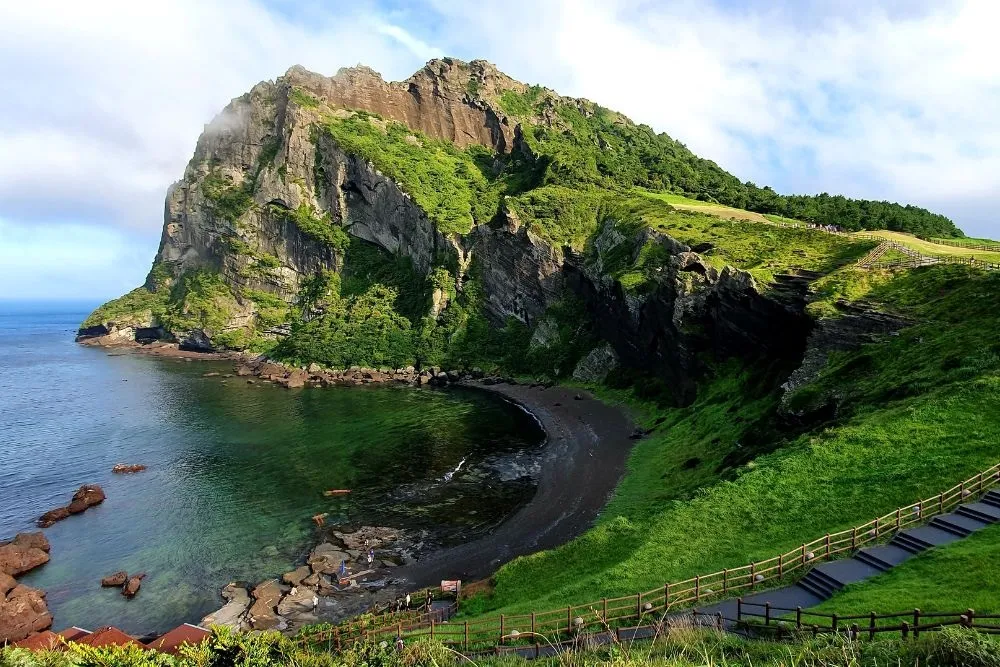
Jeju Island is a popular tourist destination. 15.2 million Tourists visited the island in 2019 (13.5 million of them were domestic visitors). This is hardly surprising given its abundance of beaches, gorgeous natural settings, rich cultural history, and delicious cuisine. There is something for everyone on Jeju Island, regardless of their hobbies. There is a description below as when is the best time to visit Jeju island.
The popularity and variety of Jeju Island’s amenities make choosing a time to come difficult. Learn about the weather, peak and off-peak seasons, suggested activities, and how these factors impact lodging and transportation to determine when the best time to visit Jeju Island is.
With this knowledge, you can plan the ideal vacation and determine the best time to visit Jeju island.
Why Tourists Love to Visit Jeju Island
Off the coast of South Korea‘s south lies the volcanic island of Jeju. It is referred to be South Korea’s Hawaii and is the biggest island in the nation.
Jeju Island offers a wide range of tourist attractions. With sights like the UNESCO World Heritage sites Jeju Lava Tubes, Seongsan Ilchulbong (a volcanic crater built thousands of years ago), and Hallasan Mountain (the highest mountain in South Korea), it is especially well-known for its natural beauty. Famous beaches on Jeju Island include Hyeopjae Beach and Hamdeok Beach.
Jeju Island, renowned among foodies for its mouthwatering cuisine—featuring shellfish and black pig—is also rich in museums, traditional villages, history, and culture, making it an enticing destination year-round.
For those considering a visit, understanding the best time to visit Jeju Island can be key to planning a memorable experience.
Domestic visitors particularly favor its accessibility, just a one-hour flight from Seoul, making it an outstanding weekend or public holiday escape, as well as an ideal holiday alternative for longer vacations.
As travel picks back up after COVID, it remains a popular destination; in 2022, over 14 million domestic travelers would have visited. For any tourist seeking a wide variety of experiences near one another, Jeju Island is a must-see location because of its abundance of natural, cultural, and gastronomic attractions.
Jeju Island Weather and Climate
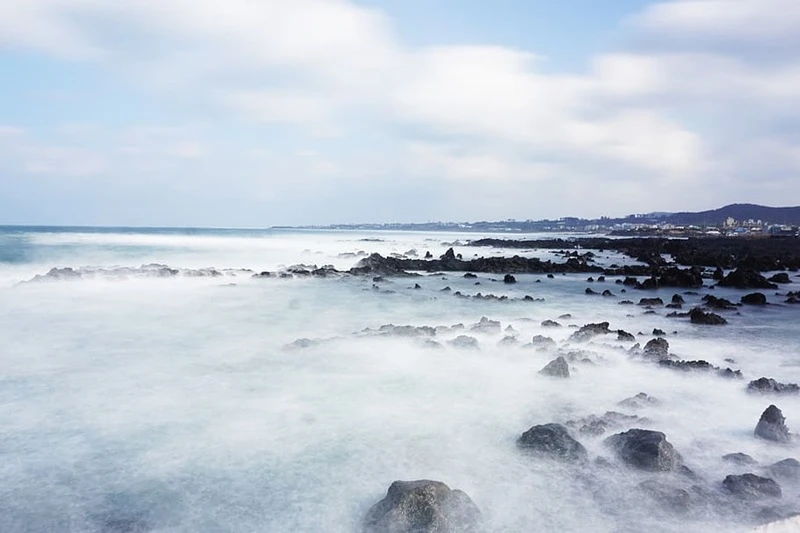
The weather is a significant consideration when determining the best time to visit Jeju Island. It experiences warm summers and moderate winters due to its subtropical environment. Situated on South Korea’s southern coast, the island enjoys a marine climate characterised by heavy precipitation and elevated humidity.
In January, the mean high temperature on Jeju Island is 5°C (41°F), whereas in August, the mean high temperature is 30°C (86°F). Jeju Island experiences its highest rainfall from June to September, with the potential for typhoons that bring with them strong winds and a lot of rain.
The ideal seasons to visit are said to be spring (March–May) and autumn (September–November), when Jeju Island has milder temperatures and less rain than in the summer.
Summer, which runs from June to August is the busiest travel season and is typically hot and muggy. The island is congested and lodging is typically more expensive during this time.
Although Jeju Island may be quite windy and chilly, the winter months of December through February are generally moderate. In the winter, snowfall is also possible, especially atop Mount Hallasan. The island could be less congested and lodging costs might be lower during certain months.
Jeju Island boasts pleasant weather throughout the year, characterized by high humidity and moderate rainfall. For those deliberating on the best time to visit Jeju Island, considering specific weather preferences becomes crucial.
Utilizing platforms like Weather Spark for more precise meteorological data, particularly in areas like Jeju City, aids in making informed decisions about the ideal time to explore this beautiful island.
Peak Tourist Season on Jeju Island
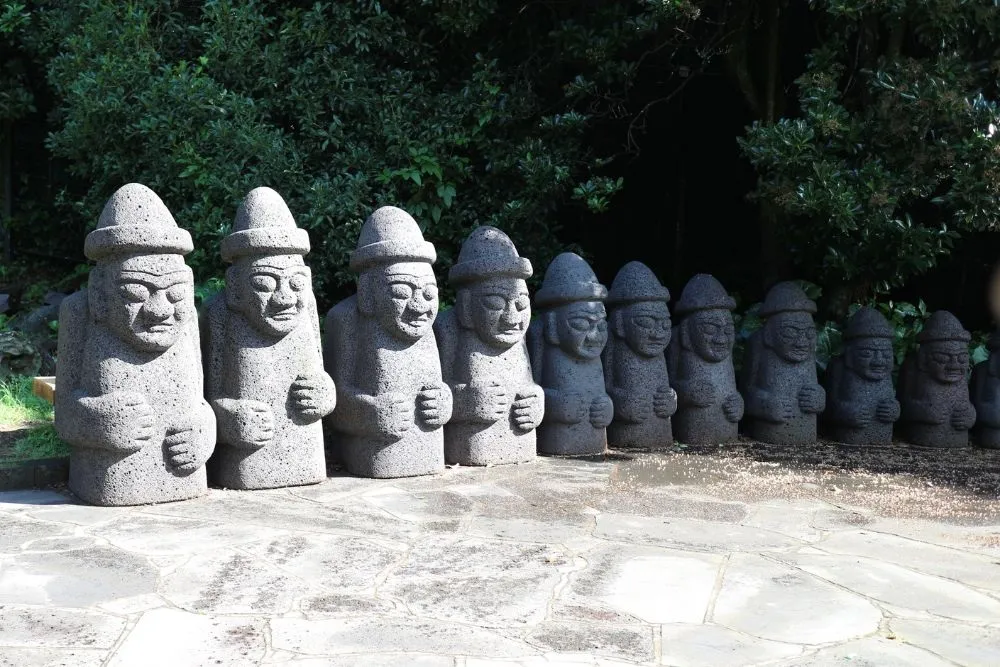
Peak seasons are usually when there are a lot of well-attended events and festivals happening, the weather is at its nicest, and domestic visitors are enjoying vacations.
The summer months from June through August mark Jeju Island’s busiest travel times, coinciding with the Korean summer vacation from mid-July to late August.
While the weather during this period is bright and mild, it’s worth considering whether this aligns with your preferences for the best time to visit Jeju Island.
These months attract a surge of visitors, particularly from within the country, drawn by the island’s stunning scenery and beaches. However, due to this influx, travel and lodging costs tend to increase, alongside other tourism-related expenses.
The blossoming season of spring flowers is another busier time of year. The island is well-known for its breathtaking springtime blooms, which include the lovely yellow canola and cherry blossoms.
This is a great time to view the island in full bloom because several flower events are happening, including the Jeju Canola Flower Festival and the Jeju Cherry Blossom Festival.
Peak season also occurs during the autumn foliage season, which is ideal for hiking the island because of the stunning tree hues.
Peak travel times on Jeju Island provide a plethora of experiences and activities, but they may also be quite congested and costly. Visit the island in the off-peak season if you want a more relaxed or reasonably priced vacation.
Shoulder and Off-Peak Tourist Season on Jeju Island
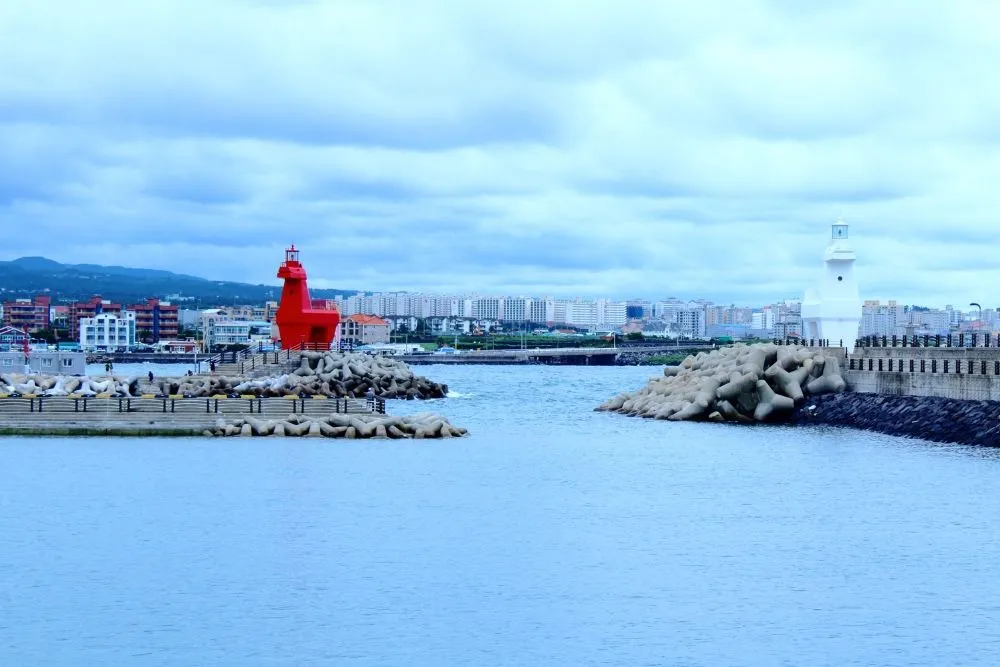
The shoulder seasons and off-peak periods on Jeju Island offer a distinct experience from the bustling peak season, making them a potential best time to visit Jeju Island for those seeking tranquility and avoiding inflated rates.
These seasons might be a perfect time to visit the island as they provide a different experience than during peak season.
The shoulder seasons are Spring (March to May) and Autumn (September to November), excluding the prime times for Spring flowers and Autumn foliage. The temperature is nicer throughout these seasons, and there won’t be as many people as during the busy season.
On Jeju Island, winter (December–February) is regarded as the off-peak season. Although it’s windier and colder than during peak season, the weather is often milder.
This can be a nice time to visit the island if you don’t mind the cold because it can be relatively tranquil and hotel costs are reduced. Jeju Island’s most sought-after fruit, tangerines, is also in season at this period. The harvesting season spans approximately from October to March.
Benefits of Traveling to Jeju in the Shoulder and Off-Peak Seasons
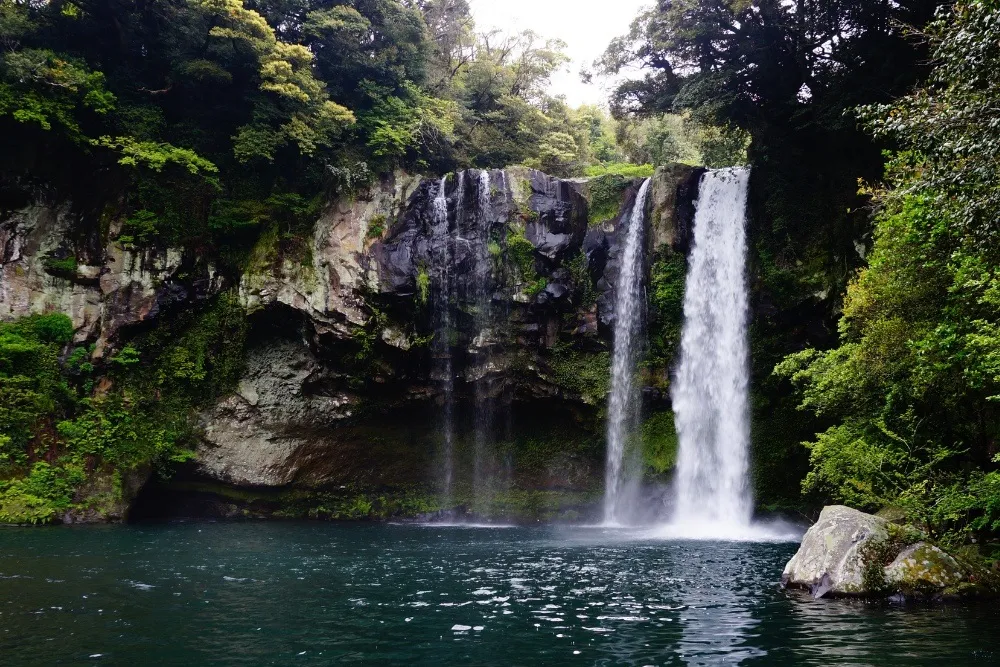
Aside from cheaper costs and the opportunity to see the island in a new light, visiting Jeju Island in the off-peak season offers several advantages such as less crowded beaches and hiking paths. These quieter periods can be considered the best time to visit Jeju Island for those seeking a more tranquil and intimate experience
Travel and lodging reservations are simpler to make during shoulder and off-peak seasons. Remember that during certain seasons, several well-liked tourist attractions or activities can close or have restricted hours. Additionally, the off-peak season is often less costly than the peak season.
These are the seasons when most activities, lodging, and transportation are less expensive, which makes sticking to a budget simpler.
Enjoying the island’s beaches and hiking trails with fewer visitors is one of the key advantages of traveling during shoulder or off-peak seasons. It might be challenging to locate a peaceful place to unwind or take in the views at the busiest times of the year due to the crowds on the hiking trails and beaches.
There are fewer tourists and more tranquillity to take in the island’s natural splendor when you visit during the off-peak season.
A chance to engage with people more and gain a deeper knowledge of their culture may also be presented by visiting at off-peak hours. The island is frequently swamped with visitors at the busiest times of the year, making it challenging to engage with the locals.
However, it is simpler to travel to nearby locations and take in the local way of life during the off-peak season.
There are advantages and disadvantages to traveling outside of the busiest tourist seasons, but if you want a more relaxed and affordable vacation, think about going to Jeju Island in the shoulder or off-peak seasons.
The Influence of Tourist Seasons on Transportation and Accommodation
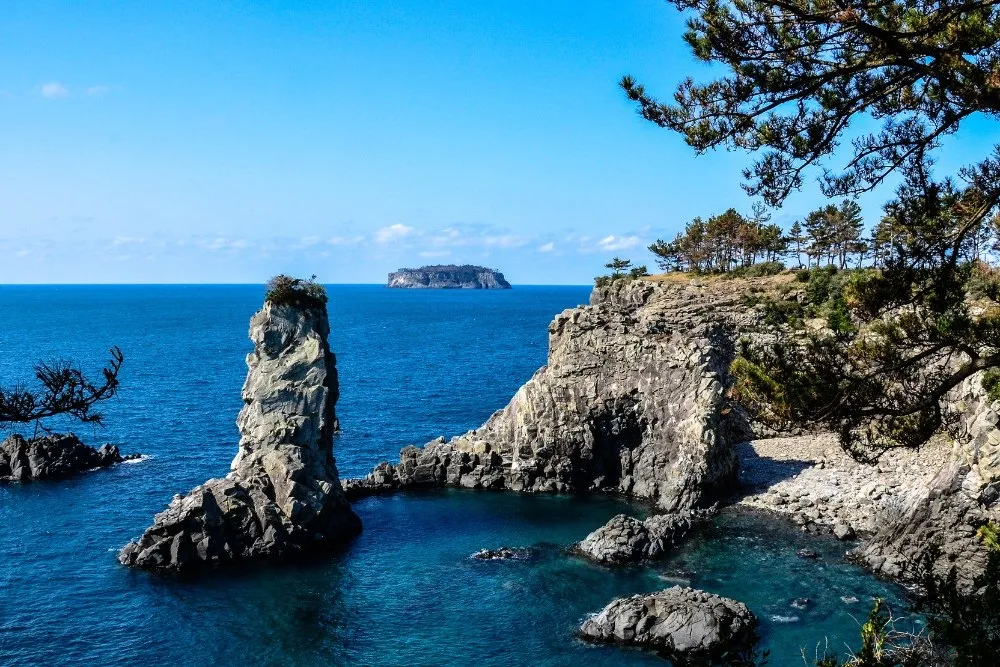
The primary mode of transportation for tourists visiting Jeju Island is via plane. With 16 million tickets available over a year, it is the busiest domestic flight route in the world. There are flights to Jeju Island from several South Korean cities. Depending on the season, ferries from the mainland can also take you to Jeju Island; the cost varies.
Due to its flexibility and ability to access isolated areas, renting a vehicle or scooter is a popular option to explore the island. However, due to strong demand, renting a vehicle or scooter at the busiest time of year might be challenging. Prices for renting cars and scooters are also often higher in peak seasons than in off-peak times.
While they are less handy than a vehicle or scooter, buses and taxis are still an option for getting about the island. In addition, Jeju Island’s major cities and surrounding areas are connected by a local intercity bus service.
On Jeju Island, lodging options vary from opulent resorts to reasonably priced guesthouses. There are many hotels and resorts, and during the busiest times of the year, they can become booked up quickly and may become more costly.
A room can be found more easily and for less money during off-peak seasons. While popular and less expensive, guesthouses and hostels may fill up quickly during high season.
On Jeju Island, there are many of alternatives for lodging and transportation, however, availability and costs could change with the season. Prices will be higher and it may be harder to locate lodging and transportation during busy times.
To guarantee you have a place to stay and a means of transportation during your vacation, plan and book reservations in advance during these popular times. Off-peak times are more cost-effective and make it simpler to get lodging and transportation.
Best Time to Visit Jeju Island by Activity
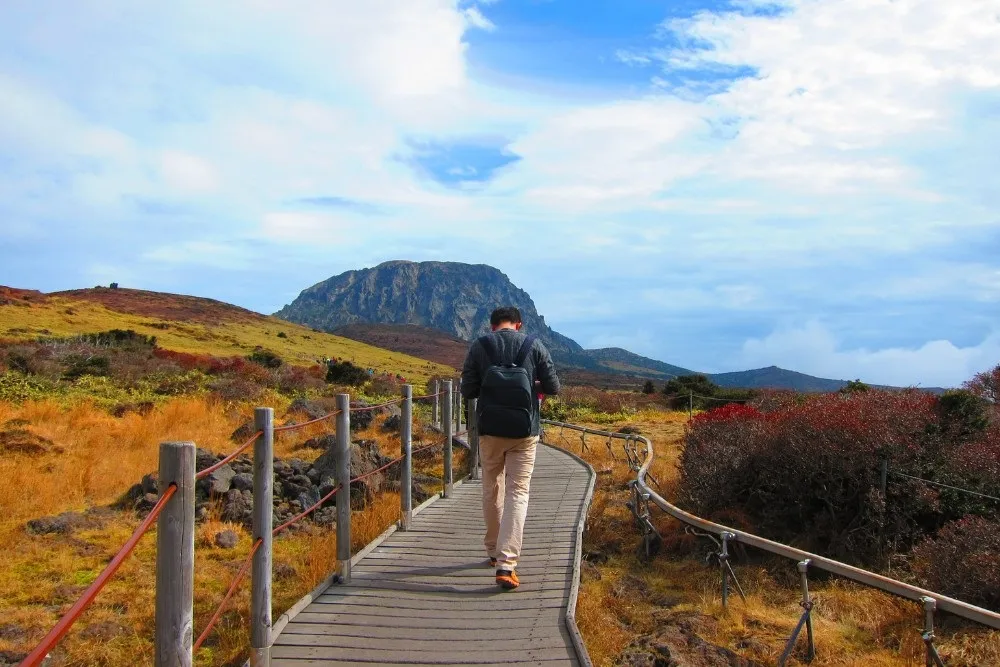
Visitors may engage in an extraordinarily broad variety of activities on Jeju Island, including as hiking, water sports, and cultural excursions. Here is a summary of some of the most well-liked things to do in Jeju Island, along with the ideal time of year to do them:
Hiking: The island of Jeju is renowned for its breathtaking natural settings, which include South Korea’s highest peak, Hallasan Mountain. The island’s cherry blossoms and autumn foliage are at their peak during the spring and autumn seasons, which are also the ideal times of year to go trekking.
Beaches: Hyeopjae Beach, Hamdeok Beach, and Seongsan Ilchulbong Beach are just a few of the stunning beaches on Jeju Island. The summer months of June through August are ideal for beach visits because of the pleasant weather.
Water sports: Swimming, snorkeling, and scuba diving are all excellent water activities to enjoy on Jeju Island. The summer months of June through August are ideal for water activities since the weather is pleasant.
Cultural experiences: Traditional villages and museums may be found on Jeju Island, which has a rich cultural legacy. Generally speaking, you may enjoy these attractions all year round.
As you can see, Jeju Island provides a variety of experiences depending on the season, thus there is never a bad time to come, depending on your preferences.
Useful Resources
Conclusion
Popular travel destination Jeju Island is renowned for its exquisite cuisine, breathtaking natural scenery, lovely beaches, and rich cultural history. The article examined the ideal time to visit Jeju Island, as well as the island’s environment and weather, as well as the busiest and least busy travel seasons.
It also examined how transportation and lodging are affected by the tourism seasons. The kind of experience you hope to have will determine when is the best time to visit Jeju Island. The best time to go is in the summer, from June to August, if you want a nice, sunny holiday.
The island’s beaches and aquatic activities are at their peak during this period. But since it’s also the busiest travel time of year, things may get congested and pricey.
The best times to visit Jeju Island are during the shoulder seasons of spring (March–May) and autumn (September–November), when temperatures are cooler and ideal for trekking and taking in the stunning autumn foliage and flowers of the island.
The off-peak season is winter, which runs from December to February. Prices are lower and the island is less congested. Planning will ensure that your trip to Jeju Island is memorable and enjoyable. Take into account the weather, the travel experiences you enjoy, and your budget.
Peak seasons tend to be more expensive and crowded, while off-peak and shoulder seasons can be more affordable and offer a different, more peaceful experience. We recommend that you book transport and accommodation in advance, especially during peak periods.
